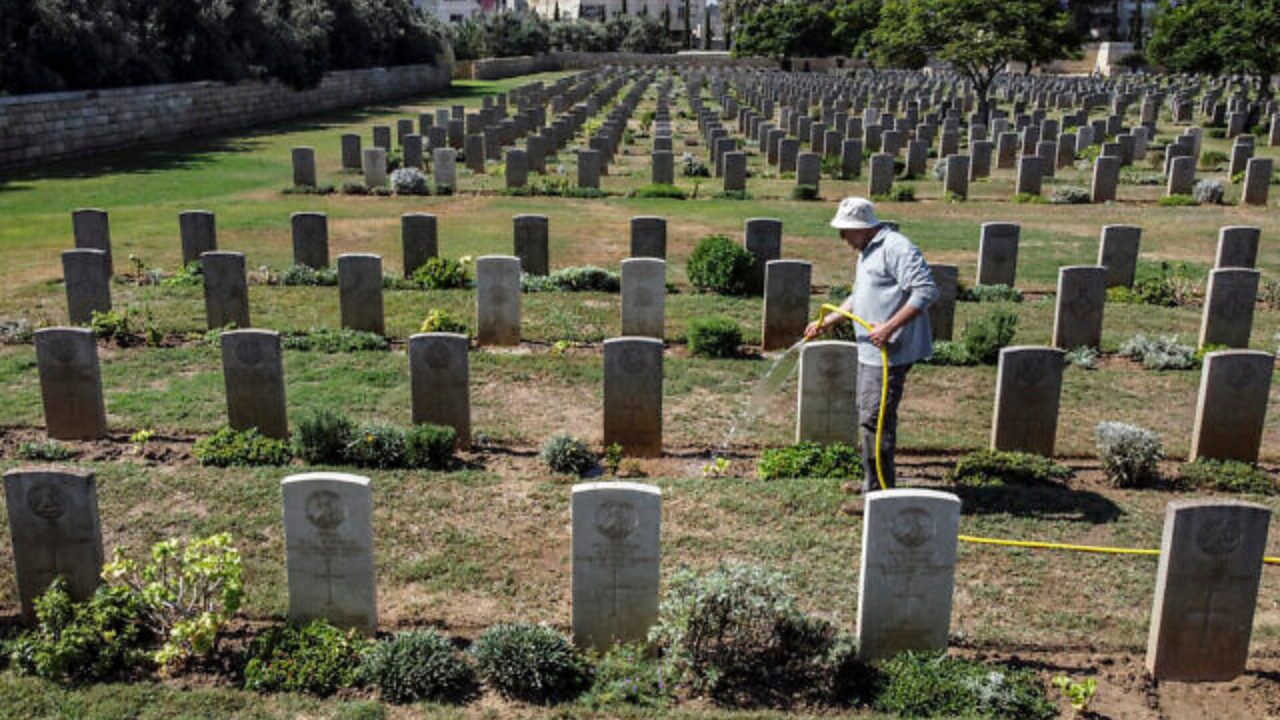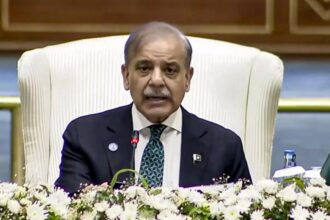A recent discovery by the Israeli Defence Forces revealed an alleged plan devised by Hamas leaders Yahya Sinwar and Muhammad Deif in 2022 to exhume the remains of British and Commonwealth soldiers from World War I and II buried in the Gaza Strip.
The plot aimed to use these remains as leverage to prevent the UK from relocating its embassy from Tel Aviv to Jerusalem, following an announcement by then-Prime Minister Liz Truss.
The plan was uncovered earlier this year during an inspection of an underground Hamas compound by Israeli soldiers, revealing a seven-page strategy that detailed the terror group’s intentions to hold the soldiers’ remains hostage as a bargaining chip.
The plot also included demands for the UK to either relocate the soldiers’ bodies or pay “lease fees” retroactively dating back to 1917. More than 3,000 Christian and Jewish British soldiers, many of whom died fighting the Ottomans in 1917, are interred in a cemetery in central Gaza.
“If the British government does not meet the aforementioned demands, the Gaza Municipality will act to remove all the corpses from the cemeteries and collect them in a special location by judicial order, declaring that the corpses are considered captive until a solution or deal is found,” read part of Hamas’ plan, which was shared with The Telegraph.
“The British government will find itself in an embarrassing position in front of the British people, its political elite, and its military if any country desecrates the corpses of its soldiers,” the plan continued.
Truss ultimately decided against the move to Jerusalem, leading to the apparent scrapping of the Hamas plan. However, concerns remain that the plot could resurface in the future.
“There is no way to rule out that Hamas will use this strategy or other similar ones to influence external affairs or anything within their agenda in the future,” an unnamed Israeli official told The Guardian.
The ongoing conflict between Israel and Hamas has resulted in some damage to the cemetery where the soldiers are buried. The full extent of the damage remains uncertain but highlights the continued vulnerability of the site amidst regional tensions.
The plot aimed to use these remains as leverage to prevent the UK from relocating its embassy from Tel Aviv to Jerusalem, following an announcement by then-Prime Minister Liz Truss.
The plan was uncovered earlier this year during an inspection of an underground Hamas compound by Israeli soldiers, revealing a seven-page strategy that detailed the terror group’s intentions to hold the soldiers’ remains hostage as a bargaining chip.
The plot also included demands for the UK to either relocate the soldiers’ bodies or pay “lease fees” retroactively dating back to 1917. More than 3,000 Christian and Jewish British soldiers, many of whom died fighting the Ottomans in 1917, are interred in a cemetery in central Gaza.
“If the British government does not meet the aforementioned demands, the Gaza Municipality will act to remove all the corpses from the cemeteries and collect them in a special location by judicial order, declaring that the corpses are considered captive until a solution or deal is found,” read part of Hamas’ plan, which was shared with The Telegraph.
“The British government will find itself in an embarrassing position in front of the British people, its political elite, and its military if any country desecrates the corpses of its soldiers,” the plan continued.
Truss ultimately decided against the move to Jerusalem, leading to the apparent scrapping of the Hamas plan. However, concerns remain that the plot could resurface in the future.
“There is no way to rule out that Hamas will use this strategy or other similar ones to influence external affairs or anything within their agenda in the future,” an unnamed Israeli official told The Guardian.
The ongoing conflict between Israel and Hamas has resulted in some damage to the cemetery where the soldiers are buried. The full extent of the damage remains uncertain but highlights the continued vulnerability of the site amidst regional tensions.
Source : Times of India









